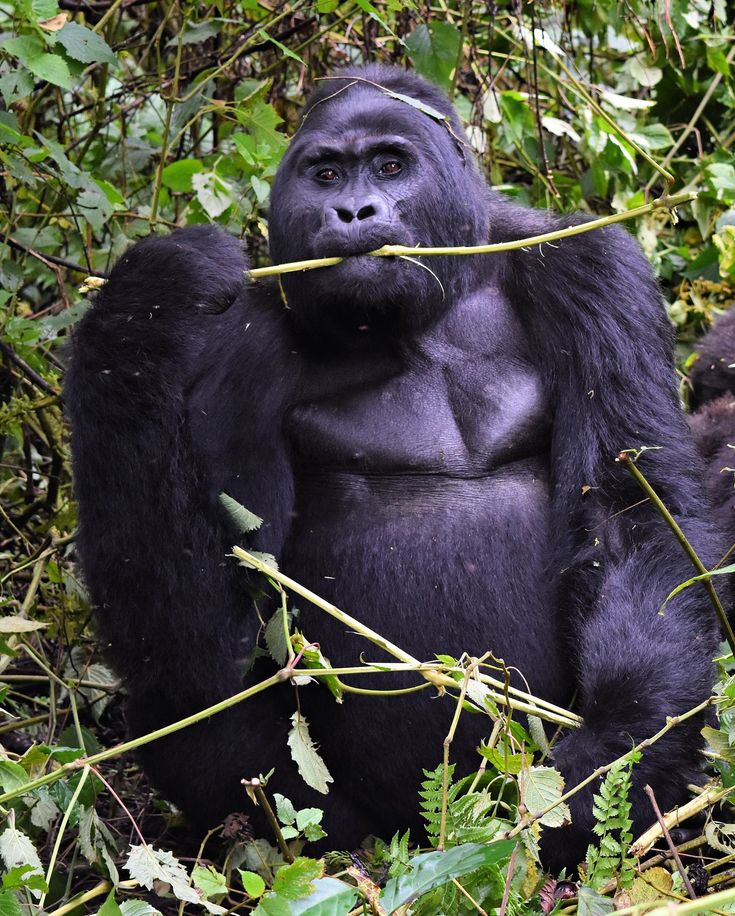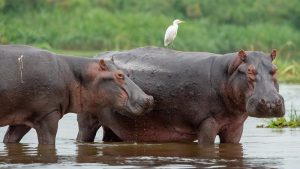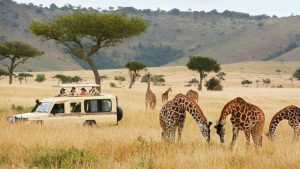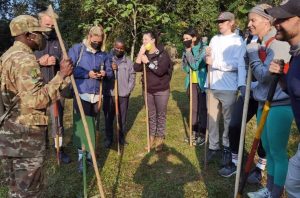Gorilla and Chimpanzee Trekking Tours in East Africa
Discover the magic of Gorilla and Chimpanzee trekking tours in East Africa in Uganda and Rwanda. Explore lush rainforests and come face-to-face with gorillas and chimpanzees in their natural habitat. East Africa offers some of the most immersive wildlife experiences on the planet. Uganda and Rwanda are home to the world’s remaining mountain gorillas and vast populations of wild chimpanzees. These treks don’t just satisfy wanderlust—they support critical conservation efforts and empower local communities.
Why Is Gorilla Trekking Considered a Life-Changing Experience?
There’s nothing quite like standing just meters from a wild mountain gorilla. In the dense forests of Bwindi, Mgahinga, and Volcanoes National Park, trekkers hike through challenging terrain to reach a habituated gorilla family. With only one hour permitted in their presence, every moment becomes unforgettable—from the gaze of a silverback to the playful antics of a young gorilla.
Looking for a deeper connection? Uganda also offers the unique Gorilla Habituation Experience, where you can spend up to four hours observing a semi-habituated family.
What’s It Like to Track Chimpanzees in the Wild?
Faster, louder, and often more active—chimpanzee tracking is a thrilling contrast to gorilla trekking. Uganda’s Kibale Forest is the top destination for spotting these intelligent primates, with sightings also common in Budongo Forest, Kyambura Gorge, and Kalinzu. In Rwanda, the dense jungles of Nyungwe Forest offer an unforgettable chimpanzee experience.
These treks require agility, as chimps are often on the move. But the reward? Observing grooming sessions, play-fighting, and expressive vocal communication that offers insight into our own evolutionary roots.
How Much Do Permits Cost and When Should You Book?
Permits are mandatory and limited—especially in high season (June to September and December to February). Booking early is essential.
- Gorilla Permits: ~$800 (Uganda), $1500 (Rwanda)
- Chimpanzee Permits: $100–$250 depending on location
Many travelers choose guided tours that handle logistics like permits, transport, lodging, and meals—letting you focus on the experience, not the details.
What Should You Pack for a Successful Trek?
Preparation is key. Conditions can be wet, muddy, and steep—especially in mountainous or rainforest terrain.
Pack the following essentials:
- Sturdy, waterproof hiking boots
- Long-sleeved shirts and trousers
- Lightweight rain jacket
- Gardening gloves (for gripping vegetation)
- Reusable water bottle and high-energy snacks
- A camera (no flash) and binoculars
- A walking stick (often provided)
How Do These Treks Support Conservation and Communities?
Gorilla and chimpanzee trekking goes beyond tourism. A portion of permit fees supports wildlife protection, anti-poaching efforts, and habitat preservation. Local communities benefit from job creation, infrastructure development, and community-run tourism initiatives.
Travelers can also visit nearby villages, artisan markets, and cultural centers—making the trip even more meaningful.
Can You Combine Gorilla and Chimpanzee Trekking in One Trip?
Absolutely. Uganda is ideal for combo tours, with Bwindi Impenetrable National Park and Kibale Forest just a few hours apart. Rwanda also offers this combination, with Volcanoes National Park and Nyungwe Forest forming a perfect loop.
These itineraries often span 5–10 days and can include add-ons like wildlife safaris, boat cruises, or cultural tours for a complete East African experience.
What Makes These Trekking Tours So Unforgettable?
Whether you’re staring into the soulful eyes of a mountain gorilla or hearing chimpanzees call across the canopy, primate trekking is unlike any other wildlife experience. It’s a journey of connection—between species, between travelers, and with the natural world.
Best of all, every step supports conservation and helps ensure future generations can enjoy the same extraordinary encounters.




